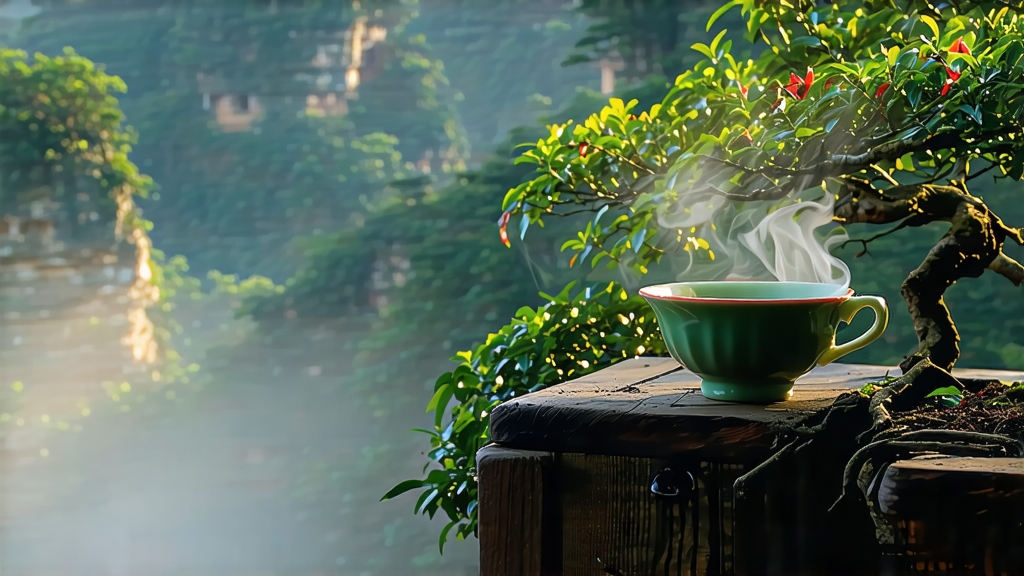
Tucked into the crevices of northern Fujian’s Wuyi Mountains, where mist coils around knife-edged cliffs and a single ravine can hold six micro-climates, Da Hong Pao—literally “Big Red Robe”—has for three centuries been the most mythologized name in the oolong universe. International drinkers often hear the tale of the Ming-dynasty scholar whose mother was cured by this tea, after which he draped his own crimson imperial robe over the bushes in gratitude; what few realize is that the same granite gullies still guard the mother trees, now 350 years old and protected by armed cameras, their 20 g of annual harvest auctioned for more than the price of gold. Between legend and commodity, however, lies a living craft that turns cultivar, mineral soil, charcoal fire and time into a liquor that smells like midnight orchards and tastes like river stones kissed by honey. This article walks you from the cliff to the cup, demystifying how Da Hong Pao is grown, made, judged and enjoyed so that you can brew the spirit of Wuyi in your own kitchen.
-
Terroir: why “rock rhyme” matters
The Wuyi range is a 600-million-year-old fault block of volcanic tuff and quartz porphyry. Over millennia, these crags weathered into thin, acidic soils that are stone-rich yet poor in nitrogen—stress that forces tea bushes to send roots two metres down, mining minerals that translate into a tactile sensation Chinese tasters call yan yun, “rock rhyme.” Imagine the tingling echo of a bell: after you swallow, a cool, stony note reverberates at the back of the throat and returns as a sweet, salivating finish. No other oolong, not even the fragrant Taiwanese high-mountain cousins, can replicate this lithic signature because no other place combines subtropical humidity, temperature swings of 15 °C between day and night, and constant mineral mist. -
Genealogy: mother trees, cuttings and commerce
Strictly speaking, only the six original bushes clinging to Jiulong Ke (“Nine-Dragon Nest”) are Da Hong Pao. Since 2006 the Chinese government has forbidden commercial picking from them; every “Da Hong Pao” you buy is a grafted descendant. Cuttings taken in the 1960s created the so-called “pure pedigree” (qixiang) gardens, while mass-market versions blend Wuyi cultivars such as Rou Gui, Shui Xian and Bei Dou to mimic the mother flavour at lower cost. The highest grade, “que she” (sparrow-tongue), is picked from 30- to 80-year-old bushes growing at 600 m on narrow ledges reachable only by foot; yields are 3 kg per mu (1/15 hectare) and retail prices exceed US $2,000 per 500 g. Yet even modest “commercial DHP” can deliver yan yun if the roasting is patient. -
Craft: the four pillars of rock oolong
a) Picking: three leaves and a bud when the top leaf is half the size of the thumb nail, usually between 8 a.m. and noon after the dew has lifted but before the sun wilts the edges.
b) Withering: the leaves are spread on bamboo screens set on racks inside the cave-like factory; cool mountain air is fanned underneath for 2–4 hours until the edges feel like parchment.
c) Shaking: the most labour-intensive step. Every 30 minutes the leaves are tossed into the air and allowed to land in a heap; bruising triggers oxidation while the pile weight generates heat. Masters judge by ear: a rustle like distant rain means the cell walls are rupturing just enough. Eight to ten cycles span the night.
d) Killing-green: a 260 °C drum pan stops oxidation at roughly 40 %—halfway between green and black tea—locking in the amber colour.
e) Rolling: the hot leaves are wrapped in cloth and rolled into tight ropes that will later unfurl like miniature dragons.
f) Roasting: the soul of Wuyi. Traditionally done over a pit of glowing lychee-charcoal whose temperature is controlled by ash depth; the tea sits in rattan baskets 60 cm above the coals for 6–